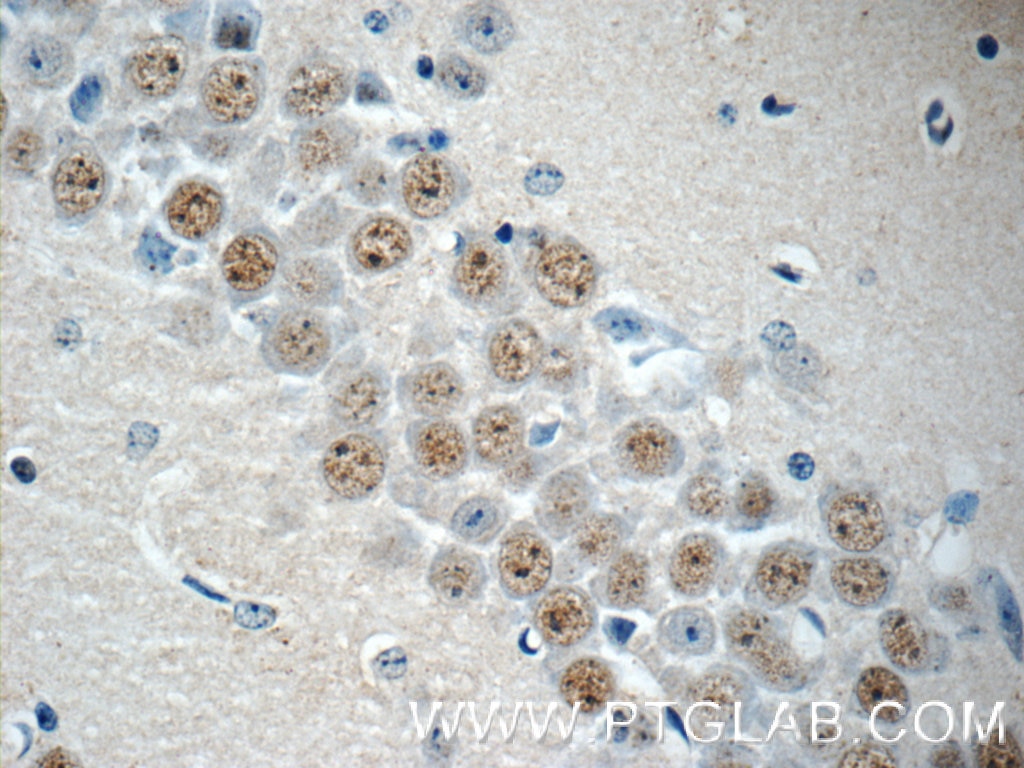RALYL Polyclonal antibody
RALYL Polyclonal Antibody for WB, IHC, ELISA
Host / Isotype
Rabbit / IgG
Reactivity
human, mouse
Applications
WB, IHC, ELISA
Conjugate
Unconjugated
Cat no : 17179-1-AP
Synonyms
Validation Data Gallery
Tested Applications
| Positive WB detected in | human brain tissue |
| Positive IHC detected in | mouse brain tissue Note: suggested antigen retrieval with TE buffer pH 9.0; (*) Alternatively, antigen retrieval may be performed with citrate buffer pH 6.0 |
Recommended dilution
| Application | Dilution |
|---|---|
| Western Blot (WB) | WB : 1:500-1:1000 |
| Immunohistochemistry (IHC) | IHC : 1:20-1:200 |
| It is recommended that this reagent should be titrated in each testing system to obtain optimal results. | |
| Sample-dependent, Check data in validation data gallery. | |
Published Applications
| WB | See 1 publications below |
Product Information
The immunogen of 17179-1-AP is RALYL Fusion Protein expressed in E. coli.
| Tested Reactivity | human, mouse |
| Cited Reactivity | human |
| Host / Isotype | Rabbit / IgG |
| Class | Polyclonal |
| Type | Antibody |
| Immunogen | RALYL fusion protein Ag10898 相同性解析による交差性が予測される生物種 |
| Full Name | RALY RNA binding protein-like |
| Calculated molecular weight | 291 aa, 32 kDa |
| Observed molecular weight | 32 kDa |
| GenBank accession number | BC031090 |
| Gene symbol | RALYL |
| Gene ID (NCBI) | 138046 |
| RRID | AB_2878355 |
| Conjugate | Unconjugated |
| Form | Liquid |
| Purification Method | Antigen affinity purification |
| Storage Buffer | PBS with 0.02% sodium azide and 50% glycerol pH 7.3. |
| Storage Conditions | Store at -20°C. Stable for one year after shipment. Aliquoting is unnecessary for -20oC storage. |
Protocols
| Product Specific Protocols | |
|---|---|
| WB protocol for RALYL antibody 17179-1-AP | Download protocol |
| IHC protocol for RALYL antibody 17179-1-AP | Download protocol |
| Standard Protocols | |
|---|---|
| Click here to view our Standard Protocols |
Publications
| Species | Application | Title |
|---|---|---|
Cell Death Dis Long noncoding RNA AFAP1-AS1 promotes tumor progression and invasion by regulating the miR-2110/Sp1 axis in triple-negative breast cancer. |




